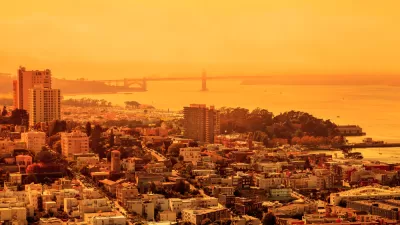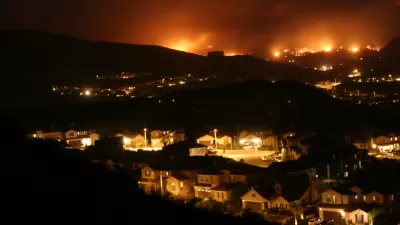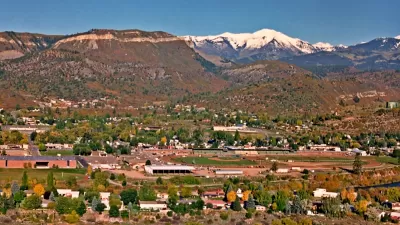Wildfires in California and Colorado are spewing out smoke that is traveling to other parts of the country. The health effects of the dirty air are substantial, and they could last long after the fires are out.

"Record setting conflagrations in California and Colorado have smothered residents of the two states with choking, stinging smoke. But the impact of that smoke is also being felt hundreds, even thousands, of miles away, and the health impacts may last for years after the flames subside," write Michael Kodas and Evelyn Nieves.
Monitoring the impacts of wildfire smoke can be hard because the trail of emissions can be unpredictable and the types of particles and gases in the air depend on what is burning.
"Smoke from burning forests and grasslands can contain everything from carbon monoxide to carcinogens like benzene and formaldehyde, but the two things that health officials focus on are ozone and particulate matter, both of which can travel thousands of miles from the fire that creates them," Kodas and Nieves.
Fine particulate matter can travel far, and the health impacts can be significant. The concern more recently is that inhaling these emissions can make people more vulnerable to the coronavirus, even if they are located far from a wildfire.
Smoke in places such as San Francisco is so bad that residents are unable to leave their homes for any period of time. As a result, they cannot take advantage of walking and outdoor dining, two activities that have helped people cope with lockdowns.
"San Francisco residents are wondering what breathing in the smoke means for their health. Can they be impaired by wildfire smoke the way a person can be sickened by second-hand cigarette smoke? Are the effects cumulative? If so, is living in an increasingly smoky California hazardous to one's health?" add Kodas and Nieves.
FULL STORY: The Fires May be in California, but the Smoke, and its Health Effects, Travel Across the Country

Study: Maui’s Plan to Convert Vacation Rentals to Long-Term Housing Could Cause Nearly $1 Billion Economic Loss
The plan would reduce visitor accommodation by 25,% resulting in 1,900 jobs lost.

Alabama: Trump Terminates Settlements for Black Communities Harmed By Raw Sewage
Trump deemed the landmark civil rights agreement “illegal DEI and environmental justice policy.”

Why Should We Subsidize Public Transportation?
Many public transit agencies face financial stress due to rising costs, declining fare revenue, and declining subsidies. Transit advocates must provide a strong business case for increasing public transit funding.

Paris Bike Boom Leads to Steep Drop in Air Pollution
The French city’s air quality has improved dramatically in the past 20 years, coinciding with a growth in cycling.

Why Housing Costs More to Build in California Than in Texas
Hard costs like labor and materials combined with ‘soft’ costs such as permitting make building in the San Francisco Bay Area almost three times as costly as in Texas cities.

San Diego County Sees a Rise in Urban Coyotes
San Diego County experiences a rise in urban coyotes, as sightings become prevalent throughout its urban neighbourhoods and surrounding areas.
Urban Design for Planners 1: Software Tools
This six-course series explores essential urban design concepts using open source software and equips planners with the tools they need to participate fully in the urban design process.
Planning for Universal Design
Learn the tools for implementing Universal Design in planning regulations.
Smith Gee Studio
Alamo Area Metropolitan Planning Organization
City of Santa Clarita
Institute for Housing and Urban Development Studies (IHS)
City of Grandview
Harvard GSD Executive Education
Toledo-Lucas County Plan Commissions
Salt Lake City
NYU Wagner Graduate School of Public Service





























